Photo
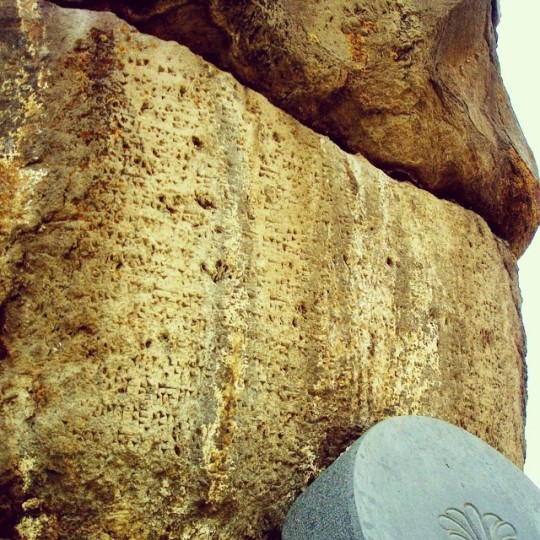
Photo: Cuneiform inscription of Rusa I at the base of the hill of Teyseba, near the road leading towards Artsvanist in the Gegharkunik Province of Armenia.
Rusa I (ruled 735-713 BC) was a King of Urartu/Ararat/Armenia. He succeeded his father, king Sarduri II.
The inscription says:
“With the might of God Haldi, Rusa, son of Sarduri, says: I again reunited Velikuhi with (my) kingdom. I erected here new gats of Haldi and built a strong castle and named it after Haldi in honor of Biainili (Van).”
Source: Monarchy Of Historical Armenia. (2013, July 5). Cuneiform inscription of Rusa I [Facebook post]. Retrieved from http://tinyurl.com/mkku2vd.
82 notes
·
View notes
Photo
Love those Parthians
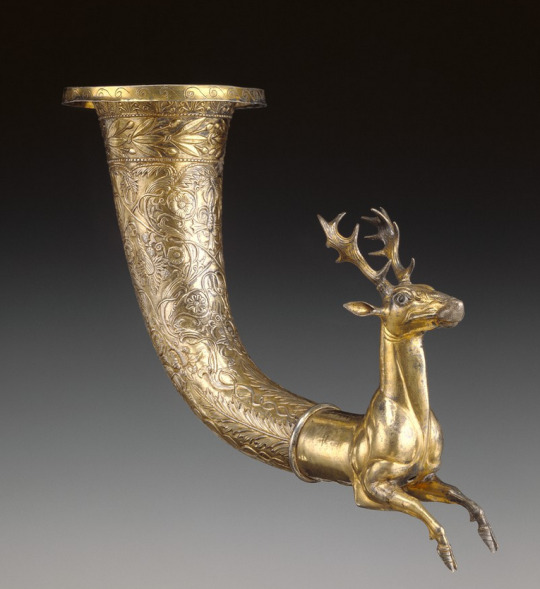
Yes, we would like our wine poured from a stag’s chest.
Read about the design, history, and a bit on the cultures that influenced where it was made here.
Stag-Shaped Drinking Horn, about 50 B.C. - A.D. 50, Unknown, Parthian. J. Paul Getty Museum.
855 notes
·
View notes
Photo
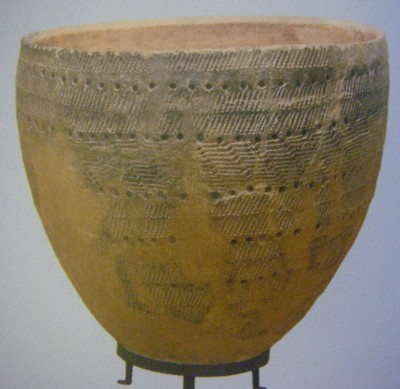
Vessel from Comb Ceramic Culture, approximately 4000 BC.
Images from this website: http://www.histrodamus.ee/?event=Show_event&event_id=2370&layer=146&lang=eng#2370
To read more about the Comb Ceramic culture, and Finnish history in general, here's a link to The History of Finland, on Google Books:
https://books.google.com/books?id=fVjC9CdKmXsC&pg=PA20&lpg=PA20&dq=comb+ceramics+culture&source=bl&ots=PxyLecDqIs&sig=Bd6J-u0Z4h5sJ52CXAJtvgbTa8c&hl=en&sa=X&ei=ApvCVIDqJY_8sAT_2IHgBg&ved=0CF0Q6AEwCw#v=onepage&q=comb%20ceramics%20culture&f=false
6 notes
·
View notes
Text
I also take requests
The only specifications I have are the time period (beginning of time to 10th century CE) and location (Eurasia, not ancient Greece, Rome, or Egypt. However, Coptic Egypt, Egypt after the rise of Islam are fine. Also, China is off limits, unless you count western China).
2 notes
·
View notes
Photo
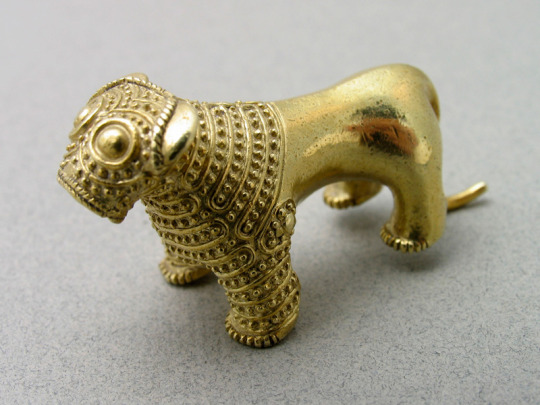
Lion figurine from the 2nd half of the 3rd millenium BC, found in Tsnori, Georgia.
From the archeological collections of the Georgian National Museum
http://museum.ge/index.php?lang_id=ENG&sec_id=121&info_id=1020
157 notes
·
View notes
Photo

Relief element from an Urartian column, from the Museum of Anatolian Civilizations
https://aylinalicanoglu.wordpress.com/author/aylinalicanoglu/page/3/
57 notes
·
View notes
Photo
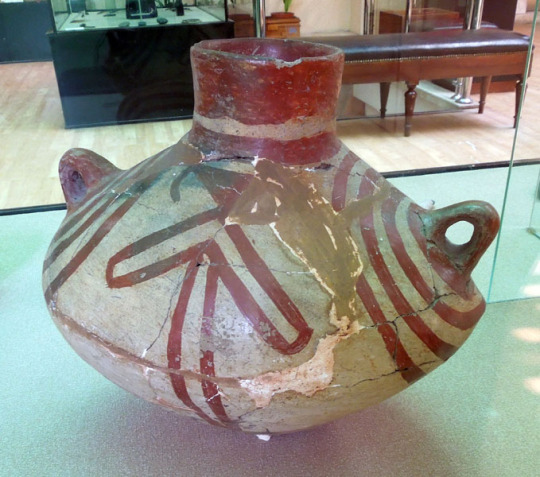
Pottery from Hacilar, Southwestern Turkey (6000-5700 BC).
http://users.stlcc.edu/mfuller/hacilar.html
11 notes
·
View notes
Photo

Urartian relief depicting the god Khaldi, Erebouni, Armenia.
http://en.wikipedia.org/wiki/%E1%B8%AAaldi
Read more about Urartu here:http://www.iranicaonline.org/articles/urartu-in-iran
119 notes
·
View notes
Photo
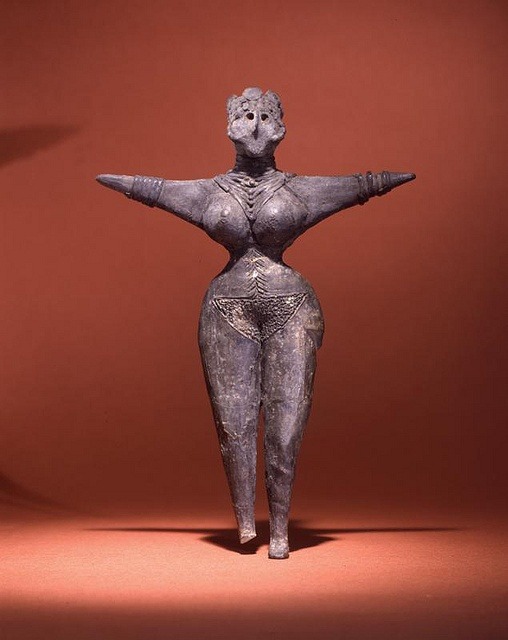
Female Figurine from Iran
This ceramic woman figurine from Tureng Tepe, Iran
3500 BCE.
The figurine is a burial offering. Although she is not clothed, she is adorned with many bracelets, necklaces and an elaborate headdress.
via > Penn Museum Collections Database
115 notes
·
View notes
Photo
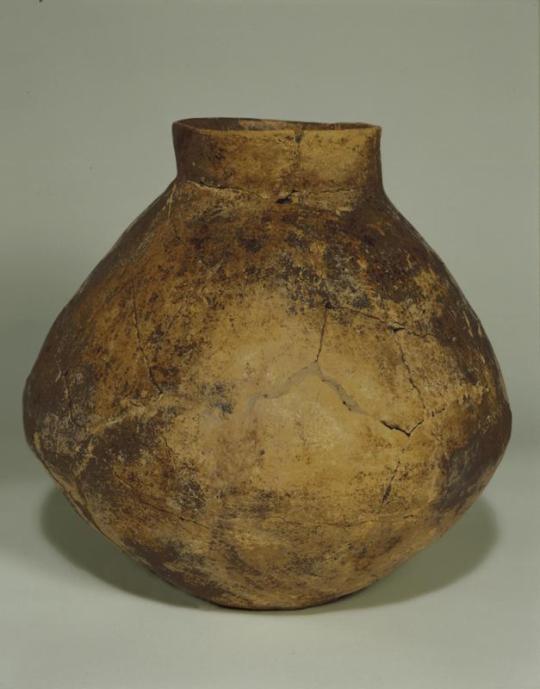
7,000 Year-old Wine Jar
Museum Collection Number: 69-12-15
9 notes
·
View notes
Link
The Proto-Indo-European Religion is reconstructed on the basis of linguistic analysis and this website gives the most scholarly information on the topic
7 notes
·
View notes
Photo
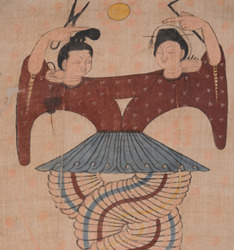
Linen banner with painted Fuxi and Nuwa, ca. 7th-9th century CE. Excavated from Astana Cemetery, Turfan, Xinjiang Uygur Autonomous Region, China. © Xinjiang Uygur Autonomous Region Museum.
http://www.penn.museum/silkroad./gallery.php
52 notes
·
View notes
Photo

Cup with lions and trees
1st millenium B.C.E.
Gold
H: 6.7 W: 10.1 cm
Western Iran, Western Iran
http://www.asia.si.edu/collections/singleObject.cfm?ObjectNumber=S1987.147
19 notes
·
View notes
Photo

Head of a Bodhisattva
3rd-5th century
Unidentified, Indian
Stucco with traces of pigment
H: 53.0 W: 36.8 D: 33.6 cm
Afghanistan
http://www.asia.si.edu/collections/singleObject.cfm?ObjectNumber=S1987.951
33 notes
·
View notes
Photo
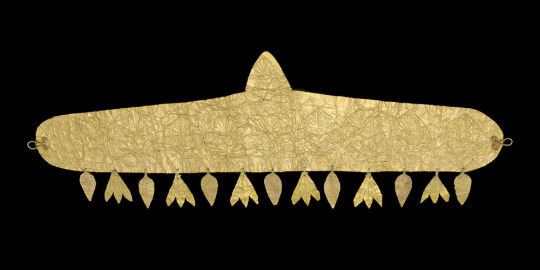
Hair Band w/palmette design
ca. 400-200 B.C.E.
Gold
H: 14.3 W: 40.0 cm
Caucasus, Unclassified
http://www.asia.si.edu/collections/zoomObject.cfm?ObjectId=22695
115 notes
·
View notes
Link
Perceptions of historical identities and present identities have always gone hand-in-hand on the basis of heritage and descent. Artefacts that remain from these histories are not only remnants of p...
0 notes
Photo

“Hanging with Christian Images”
A tapestry fragment densely decorated with pagan, Old Testament, and Christian themes. Two confronted peacocks surround a chi rho symbol, beneath them is an interlaced arch which covers two confronted doves surrounding an ankh. Beneath the ankh are the Three Hebrews, who votively raise their hands towards a chi rho and the Coptic letters alpha and omega. The doves, the peacocks, the ankh, the interlaced arch, the chi rhos, the alpha and omega, and the Three Hebrews all represent deliverance and the eternal afterlife. Numerous four-legged animals are in the margins of the arch.
Weaved out of dyed wool and undyed linen.
Made in the 500s in Egypt during the Coptic/Byzantine period. Currently held at the Cleveland Museum of Art.
176 notes
·
View notes